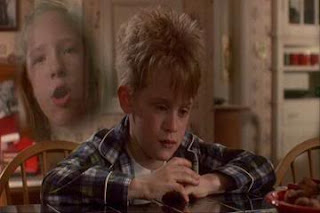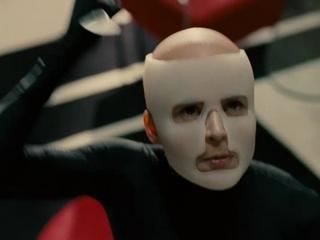Collectors
Keep Cinema going. Film criticism.
Friday, January 13, 2012
Loose Ends
I still think about cinema everyday. Which is far too often. I still co-opt anything that moves me in to a potential screen story. I still think filmmaking is an essentially democratic art for obsessive mongrels. I still think the stupid mongrels are mostly in charge. But even that does not mean all their images will suffer the consequence. I still think silent films are more important than, and, in the ideal instances, superior to, most of sound cinema. I still feel that there is no real point in writing about movies. I still think it's worth trying to penetrate them anyway. I still think my mind is too cluttered for this. I still fear our culture might someday be too cluttered for movies. I still think that, while The Passion of Joan of Arc clearly is a finer film than The Bourne Ultimatum, The Bourne Supremacy and Ultimatum may be formal equals to The General. Stylistic cousins, maybe. I still think the only obligation films actually have is to move intriguingly and that is all. I still prefer movies that do more than move intriguingly. I am still uncertain of the practical value of most films, though I am very certain of their impractical values. I still prefer Paradjanov to Tarkovsky. Thinking about movies everyday is far too often, but making a film everyday might be noble, even spiritual. I still think most of what I've written here is probably shit. Some of it's okay. I don't regret it. There is no sense in regret in life.
Friday, January 6, 2012
Motion Studies: Relative Disappearance
 |
| (Home Alone/1990) |
Kevin (Macauley Caulkin) wanders through his deserted house after awaking on a snowy day shortly before Christmas. This scene in Home Alone starts off looking like a reference to classic cinematic suspense style, or a parody of said style. The way the shots play suggest both.
Kevin’s brother’s tarantula scurries to the edge of his glass cage as Kevin hobbles through the bedroom, calling out his brother’s name. Kevin walks through the absurdly grandiose suburban parlor, calling the names of his mother, father and uncle. Kevin goes in to the basement, where his eyes scan the mannequins and dolls, and he stops cold at the sight of the menacing stove. His face, mouth open in a half-pose of his scream face (is there a childrens film that makes greater use of profiles?). The stove comes to life, its mouth opens, the coals flare up. Kevin gasps and races upstairs. He is outside, displayed in a tracking shot that follows him along the front of the house, through the snow. He sits at the dining room table and sighs; “I made my family disappear.” The taunting faces of his brother, his cousin, his uncle and his mother shimmer in to thought-bubbles above his head.
But suspense means nothing to nobody or no thing by now; not to the delicately creeping spider, the goofy stove, the mannequins. (In Kevin's world, it is vaguely suggested that things do have their own existence, in his head or outside of it). Based on what our eyes took from this space, who cares about suspense at this point? What of parody? The point of it all is that Kevin was told exactly what he (most kids) wanted to know from his roam around depopulated suburban glitz. Another profile: he smiles and looks directly at the camera and repeats what his surroundings told him; he made his family disappear.
Thursday, December 29, 2011
The Girl with the Dragon Tattoo
 |
| (Rooney Mara in The Girl with the Dragon Tattoo/2011) |
The Girl with the Dragon Tattoo has a highly addictive soundtrack. It has Sharon O belting out Led Zeppelin’s “Immigrant Song” with Trent Reznor’s techno blabber to match it up. It has her screaming erotically towards the end. The remainder of the film features droplets of trancey techno, and one darkly humorous usage of Enya’s “Sail Away.” This music lends the scenes it is matched to a distinctive thump; that sort of conniving sense you get, when all your senses are taking in too much at once, that the images in front of you are leading to something. Is it a distressing sign that they so often lead to nothing? What of The Girl with the Dragon Tattoo, which is all thump and no sense whatsoever?
It seems tedious to summarize the story, again. We all know about Stieg Larsson’s smash hit of a trilogy, or at least it feels like we do. Some may be unfamiliar with the story of Mikael Blomkvist (Daniel Craig), the disgraced Swedish journalist who is hired to find a missing girl from a wealthy family, and Lisbeth Salander (Rooney Mara), the antisocial youth heroin who is raped by her case worker, exacts bizarrely horrific revenge, reports on Blomkvist himself, and eventually teams up with him. For these Tattoo virgins, this film might look like a revenge-fantasy turned feminist action movie, with insistent diversions on journalism, Nazism and cyberpunk ethos. That is not a bad distillation of the book or the Swedish film, either, but the problem is that it’s a distillation, period. The book sustained itself as hugely entertaining trash mainly due to the thrill of watching it become about this disturbed mystery girl, and because of the kinky, genre-laden grab bag that constituted its structure. The whodunit, the family saga, the revenge thriller, the sadomasochistic horror story; all these genres were thrown in by Larsson; the story that emerged was a thrilling mess. Film is better at getting away with making a thrilling mess of genre than literature. Lighting can go from high contrast to low contrast, cameras from static to handheld, costumes from shiny to bloody and nobody gives a hoot so long as it flashes across the screen. Director David Fincher seems only somewhat more willing than Niels Arden Oplev (director of the Swedish film) to let his film be a mess; what both directors unwisely chose to do was smooth out the narrative sloppiness, which is, if anything, more than half of the story’s ridiculous charm. The weird family dynamics gradually explored in the novel are skimmed over; the sense that Lisbeth Salander is actually a fractured individual who gets sucked in to being a hero is replaced by the idea that Salander is a hero. With her black, close-upped to death motorcycle and helmet, her dark attractiveness (this person is meant to look un-pretty) and her perfectly timed one-liners, Salander is a movie archetype, not a genuine outcast who becomes an archetype. One gets the sense that the filmmakers and actors understood this progression, but they didn’t feel like communicating it. Motorcycles and explosions and extensive rape look better.
 |
| (Rooney Mara in The Girl with the Dragon Tattoo/2011) |
 |
| (Daniel Craig and Christopher Plummer in The Girl with the Dragon Tattoo/2011) |
The main issue, though, is that David Fincher has no patience. For a long time now, he’s been the most intimidatingly revered director in North America. He is the type of director lauded in film schools for his technical precision and perfectionism; critics and audiences love him for his ‘ability to cut to the chase’ and the way he rebels successfully in Hollywood; he gets final cut, he works with whichever actors he wants. But is Fincher a perfectionist or an opportunist? He takes the entire range of ‘film language’ so literally that to him, any story can be told with any degree of technique. That technique usually means an unmitigated kineticism that gives his films the feel of very long music videos and not cinema. This might explain his admitted talent with music (he started off directing music videos), but it doesn’t explain how he gets away with making such straight-jacketed films. For a director who apparently utilizes storyboards so well, his films are the excess of just that; Fincher has never met a shot that does not look like it was once a storyboard. The result is that his images are sleek moving panels, not moving imagery. They do not require one to see for themselves what’s unfolding. We need not be interested in delving in to the particulars of his style; Fincher strapped it to our eyes. This dishonesty, this pure arrogance does not go away in The Girl with the Dragon Tattoo, and it doesn’t look like it will go away over the course of his filmmaking. He’ll continue to get away with it, and continue to get a free pass on his essentially cold and clinical filmmaker’s soul. He’s the most intimidating major director today, and the most depressing.
The Girl with the Dragon Tattoo is a franchise movie. Whether or not it matters what the sequel will look like is now entirely in the hands of studio executives. The franchise movie might be its own very perverse genre by now; the newest Batman film will be rolling out next year, along with at least two others. They are product movies; they showcase certain music, brands, and lifestyles the average viewer may wish to follow. They are shiny; the cinematography is unblemished, un-ironic. Every character, even the bad guys, is essentially a hero in their uncomplicated way of fitting in to the film’s world, and the popular imagination. Lastly, they are cash cows; they make a lot of money. But no franchise film has yet transcended the concept of the franchise film. With Stieg Larsson’s books, it felt like we had material that was begging to be franchised in cinema, but which, more importantly, might be that transcendent film. Multiple plotlines, a broad, bombastic sense of social commentary, characters in trouble in their lives rather than in the mere mission they are assigned to; this is the stuff of an exciting franchise film. And when asked whether we should prefer the Swedish film or the American film, the answer looks irrelevant. The only realistic answer is that we should scrap it all and start over.


Labels:
David Fincher,
Franchise Movies,
Motorcycles,
Stieg Larsson
Thursday, December 22, 2011
Worthwhile



I am not going to make a top-ten list of the best films of 2011. I outright, point-blank refuse. However, here is a list of some films I saw this year that I believe may be more worth viewing than most others. This is not to say they have any heirarchy, any immediate standing in the history of cinema, or that I'm right at all. It means they were films that, due to my enjoyment of them, seem to have used the form in a methods that are startling, risky and interesting. Because of those three essential qualities, they may or may not have contributed something to the larger sphere of moving imagery.
The Skin I Live In
The Tree of Life
Uncle Boonmee Who Can Recall his Past Lives
Shame
Lemmy
Without
Possession (originally released 1981)
Le Quattro Volte
Melancholia
Which films did I forget? Possibly several. Which bad movies are worth talking about? None.
Subscribe to:
Posts (Atom)